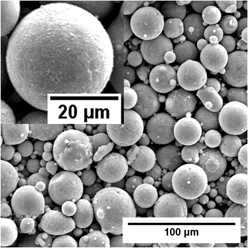Published online by Cambridge University Press: 30 June 2015

Oxidation of atomized Al–Mg–Li alloys with compositions ranging from Al0.85Mg0.1Li0.05 to Al0.55Mg0.4Li0.05 (wt%) was examined by thermogravimetry/differential thermal analysis. The results showed that oxidation proceeded in two steps. During the first step, lithium and magnesium were oxidized preferentially and removed from the metallic phase. The other step, during which the remainder of the metallic phase was oxidized, occurred over a wide range of temperature (989–1098 °C). The temperature of the second effect decreased slightly with increasing magnesium content from 10 to 30% in the alloy. For Al0.55Mg0.4Li0.05 alloy, the second exothermic peak occurred at 540 °C, and no exothermic peak was observed at higher temperature. The porous structure formed during the selective oxidation promotes the oxidation of residual Al in the alloy. Al0.55Mg0.4Li0.05 was oxidized completely at 1100 °C, lower than the temperature of other alloys. The thermite reaction experiment of Al0.55Mg0.4Li0.05–Fe2O3 system conducted in Ar showed a reaction temperature of 587 °C, significantly lower than the reaction temperature observed for Al–Fe2O3 system.